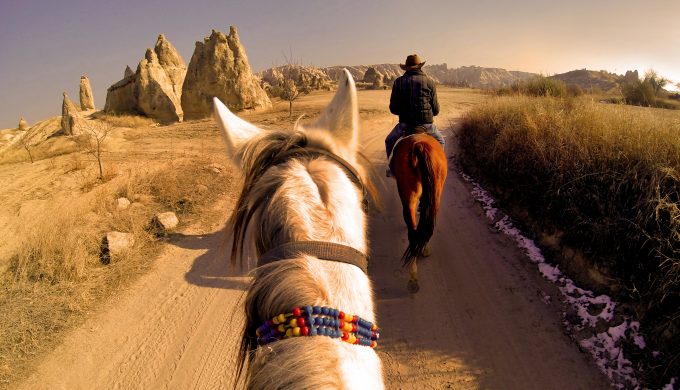One of the main veins through which Texas longhorn cattle were driven north is the Shawnee Trail. Why it was named such remains a mystery, although some believe it was due to the fact that a Shawnee village may have been located along the Texas side of the trail’s route at the Red River, or that the trail skirted the Shawnee Hills prior to crossing the Canadian River. Either way, the name stuck and this pathway was recognized as the integral way to take cattle from both sides of the main artery (passing through Austin, in the Texas Hill Country, as well as Waco and Dallas) north to the railheads.
History
The Shawnee Trail & Texas Fever had a Date With Destiny

Photo: @akiii via Twenty20
Used prior to and just following the Civil War, the Shawnee Trail crossed the Red River at Rock Bluff, and went north along the eastern edge of what is now recognized as the state of Oklahoma. This was a passage that would later be mirrored by the Missouri-Kansas-Texas Railroad. The original passage was said to be a trail used by Native Americans for hunting. Cattle drovers made use of it through to its forks, which were north of Fort Gibson. Here it would split into access points for Missouri and Kansas.

Photo: @addison.beyer via Twenty20
The earliest known drive on the Shawnee Trail for Texas herds happened in the 1840s. Following that, its usage became more frequent. However, by 1853 drovers ran into trouble with local western Missouri farmers blocking the passage and forcing some 3,000 head of cattle to turn back. This came about due to the longhorns carrying ticks with a serious ailment known as Texas fever. Although the cattle from Texas were immune to it, the local cattle were not, resulting in the decimation of herds. Two years later, when drivers tried to circumvent the blockades, hostilities grew as angry western and central Missouri farmers formed vigilante groups, stopping herds, and killing Texas cattle. Eventually, legislation passed in Missouri and Kansas by the late 1850s, in efforts to put an end to the drives from the Lone Star State.

Photo: @Globetrotter via Twenty20
Following the Civil War (1861-1865), the Shawnee Trail was again made use of by drivers from Texas. The Lone Star State was practically overflowing with excess cattle and no local markets, by the spring of 1866, between 200,000 and 260,000 longhorns were driven north. Despite the fact that some of the herds were turned away, more managed to make it around or through, being diverted or delayed at hostile farming settlements. Within the first six months of 1867, six states had enacted laws against trailing, forcing Texas cattlemen to develop a new passage as opposed to regular use of the Shawnee Trail. Avoiding tick fever trouble and skirting farm settlements, market facilities built at the terminus of the Chisholm Trail in Kansas by Joseph G. McCoy, an Illinois livestock dealer, put an end to extensive use of the Shawnee Trail. Although the latter would continue to be used to transport cattle headed for processing plants, it went down in history for the stories, trials, and tribulations that played out along its route.


